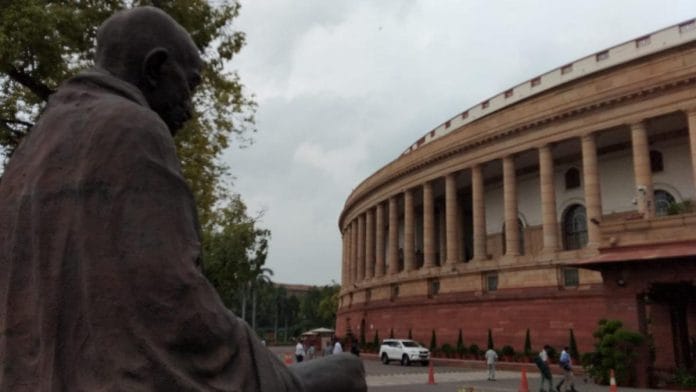New Delhi: A parliamentary panel has cited the prolific art thief Subhash Kapoor as a cautionary tale to urge a more proactive approach towards prevention of antique theft as also their retrieval.
The standing committee on transport, tourism and culture, chaired by V. Vijayasai Reddy of the YSR Congress, made several recommendations to this end in a report, ‘Heritage Theft – The Illegal Trade in Indian Antiquities and the Challenges of Retrieving and Safeguarding Our Tangible Cultural Heritage’, tabled in Parliament Monday.
Kapoor, an Indian-born US national currently in a Tamil Nadu jail, is accused of smuggling 2,600 individual objects worth over $143 million.
The panel has recommended that Indian law enforcement agencies — including the Customs Department, the Archaeological Survey of India (ASI), Department of Revenue Intelligence, and various police forces — work together to crack the nexus between art thieves, exporters, businessmen and museum curators involved in the illegal smuggling of Indian artifacts.
The panel cited the pending retrieval of 385 antiques, and said the process should be expedited by increasing coordination between the state enforcing agency and ASI/Ministry of Culture.
It has directed the ASI and Ministry of Culture to set up a retrieval task force — with officials from the Ministry of Home Affairs and Ministry of External Affairs.
The panel noted that while the retrieval of antiques smuggled by Kapoor was easy, several stolen antiques the world over were stuck due to lack of registration and documentation.
The panel also raised concern over the poor rate of documentation of Indian antiques, calling for the process to be completed by the end of the year.
“The committee notes that in the 15 years since the inception of NMMA (National Mission on Monuments and Antiquities), only about 16.8 lakh antiquities out of a total estimated 58 lakh antiquities i.e. about 30% have been documented as on date,” the report notes.
“Further, the committee was informed by ASI… that the figure of 58 lakh antiquities is only an estimate and there may well be many more antiquities existing in India. If so, it makes the slow pace of documentation… all the more alarming.”
The panel said that, in the case of lacking documentation, some artifacts may already have been stolen.
“The committee notes that as per the CAG reports of 2013 and 2022 physical verification of artefacts has not been done regularly in the seven national museums under the control of the (culture) ministry,” it says.
“Further, given that the documentation of antiquities in site museums of ASI and the digitisation in the national museums are still in progress with majority of the objects kept in the reserve collections yet to be digitised, the committee feels that there is a huge possibility that in majority of the cases, the discovery of theft is made long after the antiquity has vanished from its place of origin.”
Among other things, the panel pulled up the ASI for not making any effort to retrieve a part of the Aural Stein Collection that had been loaned to London’s Victoria & Albert Museum prior to Independence.
The collection currently placed in the London museum includes nearly 600 textile fragments and over 70 ceramic and Buddhist objects. These rare objects, dating between 200 BC and 1200 AD, were recovered at the beginning of the 20th century by Hungarian-born British archaeologist Marc Aurel Stein from the Silk Road — an ancient network of trade routes across Central Asia that connected the East and West.
(Edited by Sunanda Ranjan)






